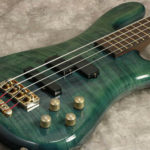
The Harmonic Series For Bass
The harmonic series is a simple mathematical sequence of multiples:
n x 1, n x 2, n x 3, and so on.
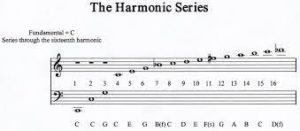
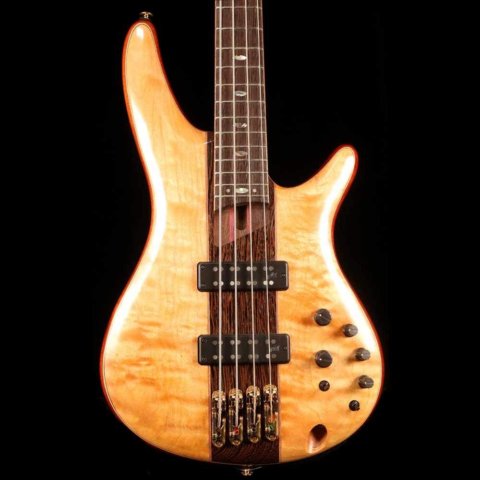
Musical instruments create sounds which are a complex mixture of many frequencies which are a result of something called the harmonic series.
What Are Overtones?
It’s important to understand you rarely hear pure single frequencies (called sine waves). Instead, there is a group of other freqeuncies, called overtones, which ring above a single low frequency called the fundamental.
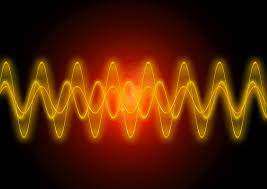
Without overtones, instruments would sound pretty boring. Listen to this C major scale with sine waves and no overtones:
Harmonic Series - Open E String
Open E rings at 41Hz (41.2034 more precisely). The note is named E after the fundamental E (41Hz) which we hear as the lowest frequency.
When you pluck the open E string, the string vibrates not only along its whole length from one end to the other, but also at many fractions of its length. These fractions are the harmonic series.
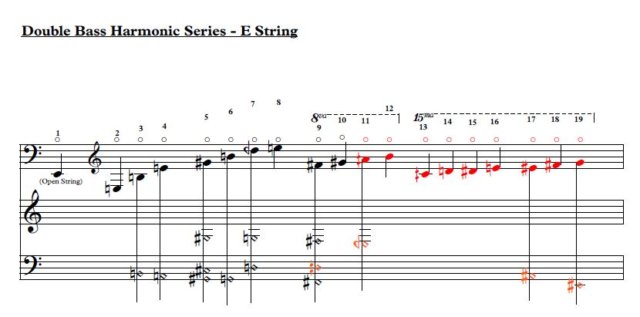
You will also find that a 7-string guitar will have a slightly bigger scale length – around 26.5” compared to 25.5”, although every manufacturer and model is different.
As you continue up the series, you get a major third (G#) which is slightly flat. Then another fifth (B), then a flat 7th (D). The 7th harmonic is quite out-of-tune to our ears and tuning system.

The notes of the harmonic series add up to a dominant 7th chord Root, 3rd, 5th, and flat 7th. The dominant 7th is the king of all chords.
There are many more harmonics above these seven. The concept is the same. You could keep heading up the series infinitely, but the higher you go it becomes less and less audible.
Visual Analysis of Open E
If you look at an analysis of an open E note on bass guitar, you can see the peaks of each harmonic and how they continue and fade as they ascend:
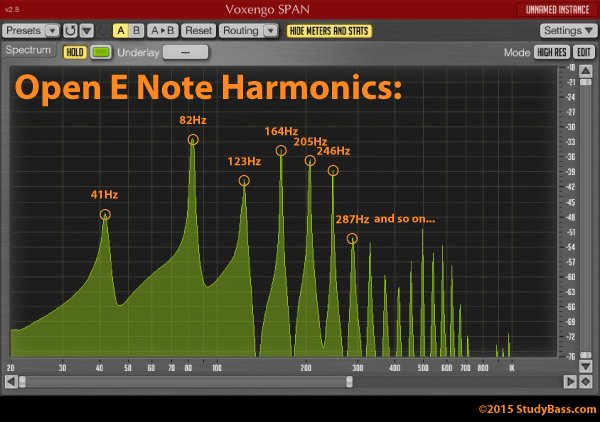
When you play a single open E note you hear these frequencies all at once:
| Harmonic | Frequency | Pitch | Interval |
|---|
41Hz x 1 | 41Hz | E | – |
41Hz x 2 | 82Hz | E | Octave |
41Hz x 3 | 123Hz | B | Fifth (+ 1 Octave) |
41Hz x 4 | 164Hz | E | Two Octaves |
41Hz x 5 | 205Hz | G# (slightly flat) | ~ Third (+ 2 Octaves) |
41Hz x 6 | 246Hz | B | Fifth (+2 Octaves) |
41Hz x 7 287Hz D (quite flat) ~ Flat 7th (+ 2 Octaves)

The first harmonic, called the fundamental, is the lowest, and it’s why we name the note E to begin with. You certainly wouldn’t want to name a single note EEBEG#BD, would you?
All of the harmonics above the fundamental are called overtones.
The first harmonic, called the fundamental, is the lowest, and it’s why we name the note E to begin with. You certainly wouldn’t want to name a single note EEBEG#BD, would you?
All of the harmonics above the fundamental are called overtones.
The Missing Fundamental Effect
There’s an interesting phenomenon in the world of psychoacoustics—especially for bass players—called the missing fundamental effect.
When you hear a tone, if the fundamental is missing, you can still “hear” the fundamental. That is, your brain somehow fills in the missing low fundamental frequency. Scientists still don’t know why this happens. Just hearing the overtones gives your brain enough information to imply and imagine the absent fundamental.
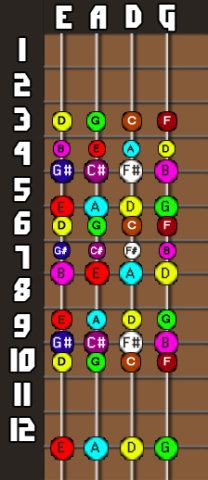

Why is this interesting for bass players? Some speakers or amps may not be capable of producing really low frequencies. As a result, the low fundamentals of bass notes may vanish. But, because you can hear the overtones, you still perceive the right low note. Even though you’re hearing harmonics one and two octaves above, you still imagine the low fundamental. You don’t hear the note an octave higher.
When you hear a tone, if the fundamental is missing, you can still “hear” the fundamental. That is, your brain somehow fills in the missing low fundamental frequency. Scientists still don’t know why this happens. Just hearing the overtones gives your brain enough information to imply and imagine the absent fundamental.
Sound is all about vibrations. Things vibrate at different frequencies, or speeds. Faster frequencies produce higher pitches while slower frequencies produce lower pitches.

It’s rare to hear pure single frequencies. Instead we hear a complex mix of the fundamental tone and its overtones. This complex mix of frequencies comes from the harmonic series.
The proportion of an instrument’s overtones is what gives it its color, or timbre
Guitar & Gear Articles


